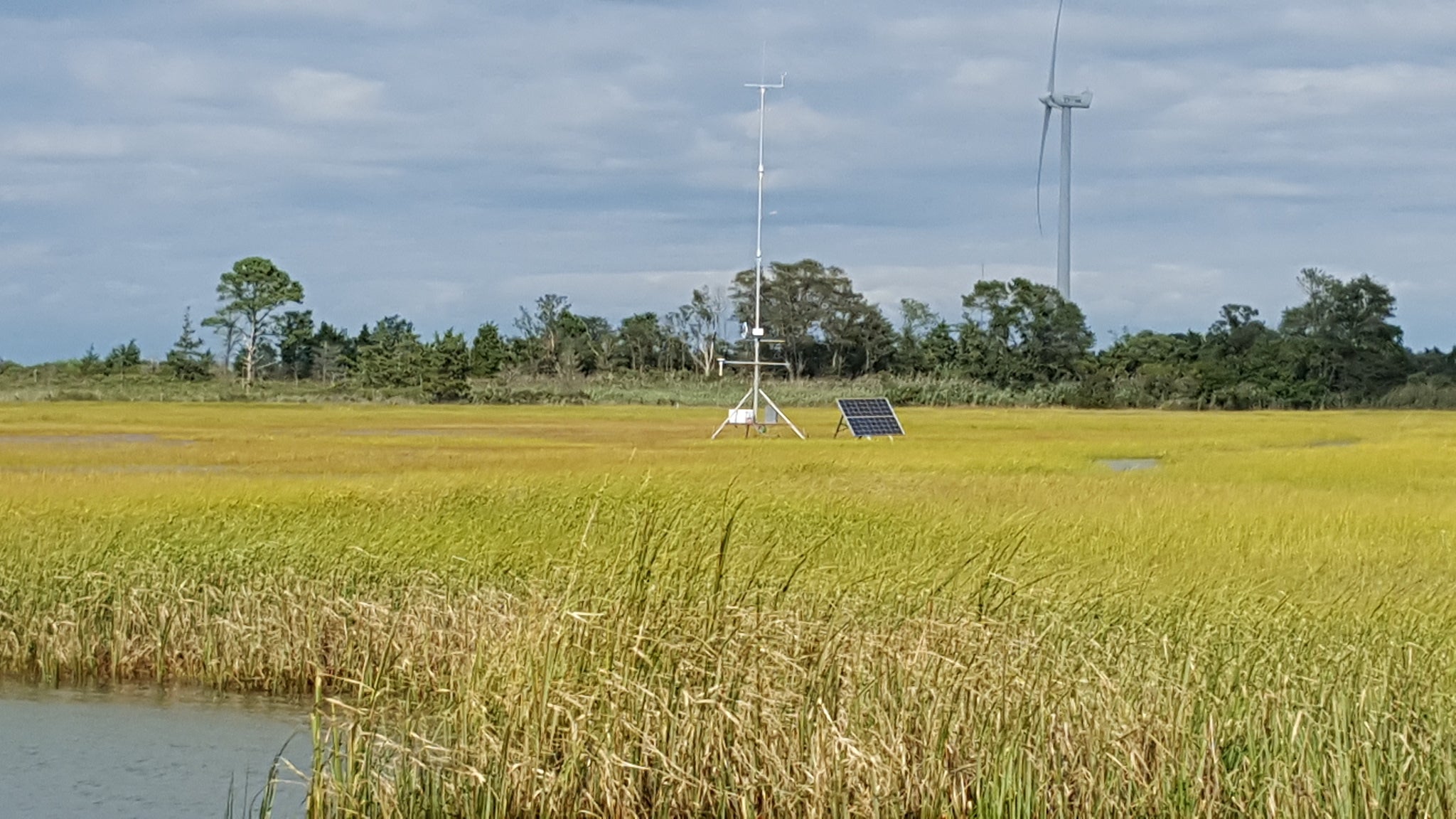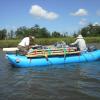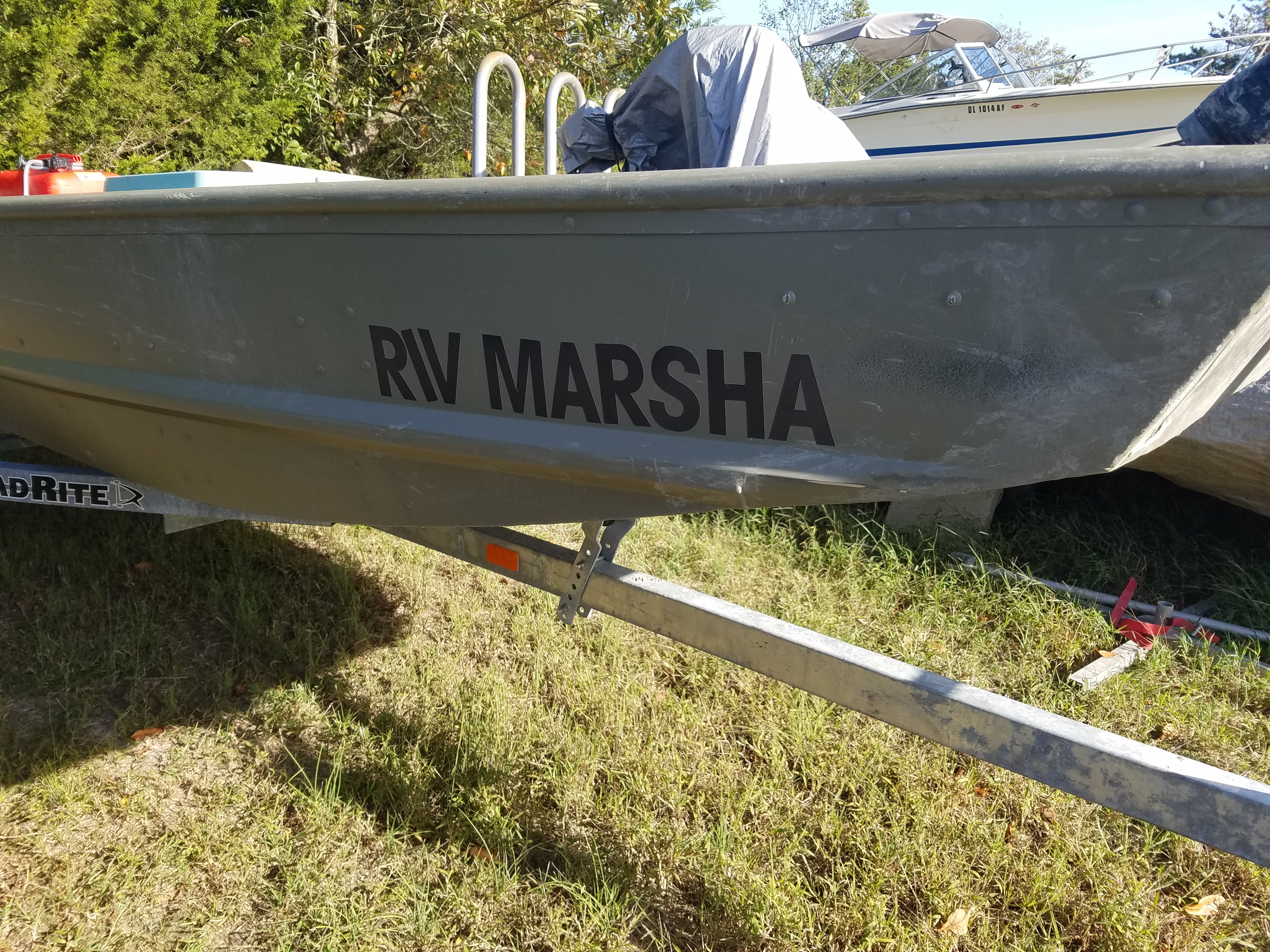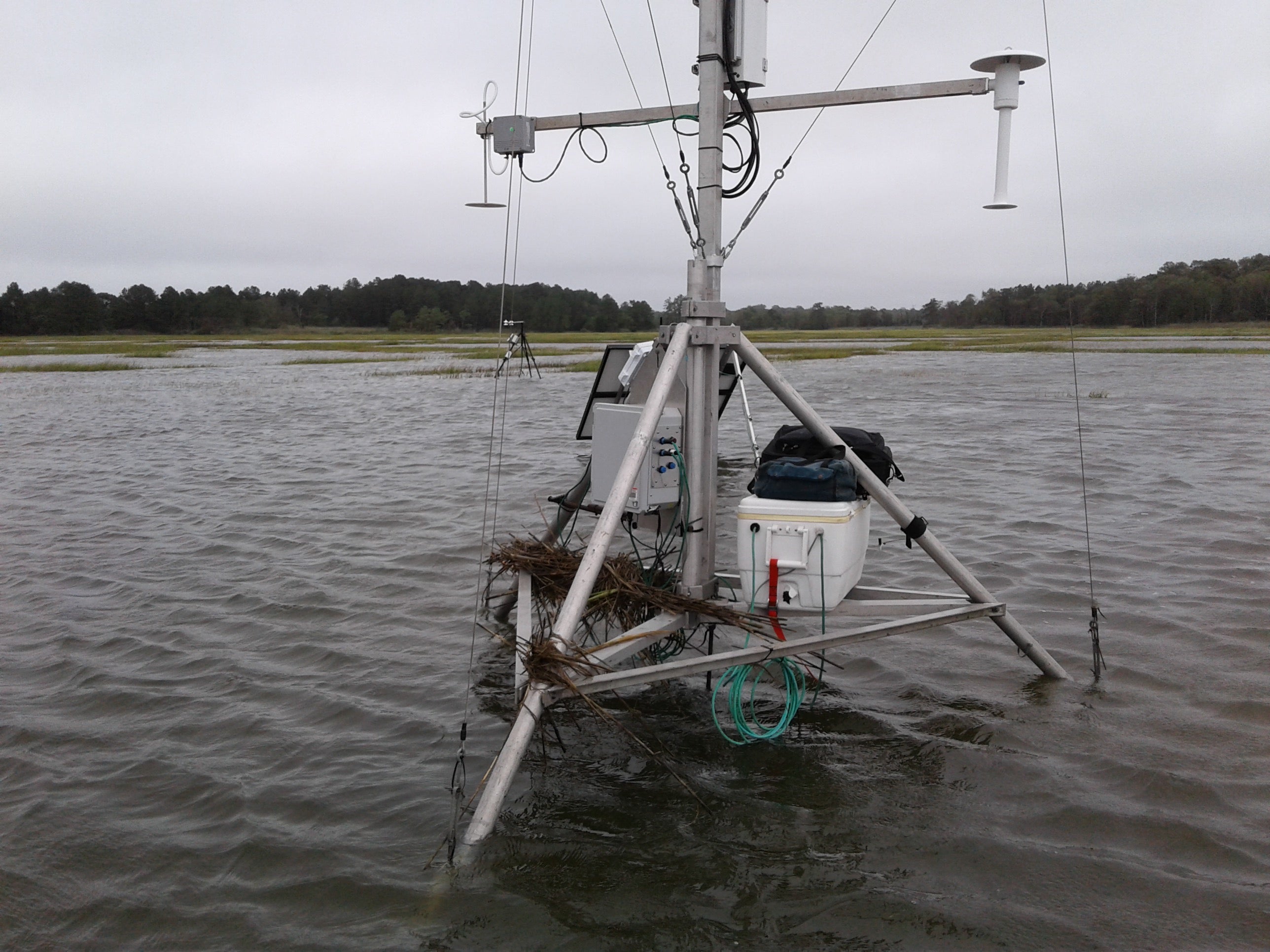VERTEX - Life on the Marsh
VERTEX
 EOL recently played a vital role in the success of the VERTical Enhanced MiXing (VERTEX) project. The goal of VERTEX is to understand how lower boundary airflow is altered by the presence of wind turbines. For example, a turbine could mix air near the surface with (generally cooler) air higher in the atmosphere and potentially produce cooler surface temperatures during the day. Those on VERTEX, however, hypothesize that vertical mixing is not enhanced due to the presence of a turbines; rather, according to the hypothesis, such mixing is more likely reduced because turbines remove energy (to make electricity) from the boundary layer. This energy is, therefore, not available for mixing. To help test this, EOL’s Integrated Surface Flux System (ISFS) team installed 15 surface flux towers downwind of a turbine in Delaware’s Great Marsh Preserve just outside the resort town of Lewes, Del. A single 80-meter wind turbine was installed on state land there in 2010 in a partnership between the University of Delaware (UD) and Gamesa, a wind turbine manufacturing company. The turbine provides enough electricity to power the nearby UD satellite campus. Additionally, two scanning lidars from the University of Maryland were used to measure the turbine wake location and intensity.
EOL recently played a vital role in the success of the VERTical Enhanced MiXing (VERTEX) project. The goal of VERTEX is to understand how lower boundary airflow is altered by the presence of wind turbines. For example, a turbine could mix air near the surface with (generally cooler) air higher in the atmosphere and potentially produce cooler surface temperatures during the day. Those on VERTEX, however, hypothesize that vertical mixing is not enhanced due to the presence of a turbines; rather, according to the hypothesis, such mixing is more likely reduced because turbines remove energy (to make electricity) from the boundary layer. This energy is, therefore, not available for mixing. To help test this, EOL’s Integrated Surface Flux System (ISFS) team installed 15 surface flux towers downwind of a turbine in Delaware’s Great Marsh Preserve just outside the resort town of Lewes, Del. A single 80-meter wind turbine was installed on state land there in 2010 in a partnership between the University of Delaware (UD) and Gamesa, a wind turbine manufacturing company. The turbine provides enough electricity to power the nearby UD satellite campus. Additionally, two scanning lidars from the University of Maryland were used to measure the turbine wake location and intensity.
Custom Setup
 When the ISFS team performed a site survey at the Great Marsh Preserve, they realized they could set up the towers one of two ways: helicopter or boat. Although the helicopter option was tempting, both logistical staffing and budget issues proved prohibitive in preparation for the project. Steve Semmer, senior engineer and rafting veteran, proposed the idea of using a cataraft. After testing Semmer’s own cataraft on a local lake, the team commissioned Down River Equipment Company, a Denver rafting outfit, to custom build a raft for VERTEX setup and teardown. Down River built a custom frame to allow for a narrow build to fit through the marsh channels, a motor on the back, and a platform on the front of the boat for loading and unloading equipment. After the boat was finished, the ISFS team created platforms to fit people and equipment comfortably. In the end, the custom design proved vital for the project, and the boat performed famously.
When the ISFS team performed a site survey at the Great Marsh Preserve, they realized they could set up the towers one of two ways: helicopter or boat. Although the helicopter option was tempting, both logistical staffing and budget issues proved prohibitive in preparation for the project. Steve Semmer, senior engineer and rafting veteran, proposed the idea of using a cataraft. After testing Semmer’s own cataraft on a local lake, the team commissioned Down River Equipment Company, a Denver rafting outfit, to custom build a raft for VERTEX setup and teardown. Down River built a custom frame to allow for a narrow build to fit through the marsh channels, a motor on the back, and a platform on the front of the boat for loading and unloading equipment. After the boat was finished, the ISFS team created platforms to fit people and equipment comfortably. In the end, the custom design proved vital for the project, and the boat performed famously.
Life on the Marsh
 Setup for VERTEX began August 10th, 2016, and teardown ended November 10th. Altogether, 12 EOL staff members traveled to Delaware for the project setup, operations, and teardown. During operations, there were at least two EOL staff in Delaware at one time whose primary objective was to ensure the highest quality data was being ingested and equipment was running at all times. If a problem arose with an instrument or data stream, the two team members were there to troubleshoot the issue, which often included traveling to one of the sites by boat. The smaller boat was affectionately nicknamed “Marsha”; stickers on the side of the boat made it official. “You can do it, Marsha” became a common mantra uttered by some of the team members in the challenging environment. Since the Great Marsh Preserve is a tidal marsh, travel to the flux towers during low tide was relatively easy thanks to the water level being low enough to travel under a local bridge. When the tide rose, however, another route had to be taken, which consumed considerably more time and precious daylight hours. Once docked at the site, sheets of plywood were used to tread on the mud; associate scientist Kate Young described the mud as having “the consistency of pudding.” In fact, during one of the last teardowns, the “pudding” consumed half of technician Clayton Arendt. While pulling a cable from the top mast of one of the towers, he took three steps backwards, only to find himself waist-deep in mud and fiddler crabs. The team there with him thought he had merely fallen and was sitting in the mud. After a few cries for help, three men were able to pull him out.
Setup for VERTEX began August 10th, 2016, and teardown ended November 10th. Altogether, 12 EOL staff members traveled to Delaware for the project setup, operations, and teardown. During operations, there were at least two EOL staff in Delaware at one time whose primary objective was to ensure the highest quality data was being ingested and equipment was running at all times. If a problem arose with an instrument or data stream, the two team members were there to troubleshoot the issue, which often included traveling to one of the sites by boat. The smaller boat was affectionately nicknamed “Marsha”; stickers on the side of the boat made it official. “You can do it, Marsha” became a common mantra uttered by some of the team members in the challenging environment. Since the Great Marsh Preserve is a tidal marsh, travel to the flux towers during low tide was relatively easy thanks to the water level being low enough to travel under a local bridge. When the tide rose, however, another route had to be taken, which consumed considerably more time and precious daylight hours. Once docked at the site, sheets of plywood were used to tread on the mud; associate scientist Kate Young described the mud as having “the consistency of pudding.” In fact, during one of the last teardowns, the “pudding” consumed half of technician Clayton Arendt. While pulling a cable from the top mast of one of the towers, he took three steps backwards, only to find himself waist-deep in mud and fiddler crabs. The team there with him thought he had merely fallen and was sitting in the mud. After a few cries for help, three men were able to pull him out.
Fun and Challenging
 For the ISFS team, VERTEX was an unusual deployment, to say the least. John Militzer, a veteran engineer on the brink of retirement, said that VERTEX was one of the more interesting campaigns in which he has participated in his 37 years at NCAR. “The salt marsh was both fun and challenging,” said Militzer. One of those challenges was the weather. During setup, the heat index soared above 110 degrees Fahrenheit for several days, making equipment hauling (e.g., battery boxes, 65-lb tripods) on slippery ground during these times a daunting task. Also, the remnants of Hurricane Hermine and, later, Hurricane Matthew dropped incredible amounts of rain on the marshy area. Water levels rose over one meter above planned high tide levels, forcing staff to raise all electrical equipment and batteries higher on their tripod mounts. Additionally, thanks to the salty humid air, a few of the instruments had to be fixed or replaced due to weather proofing failure.
For the ISFS team, VERTEX was an unusual deployment, to say the least. John Militzer, a veteran engineer on the brink of retirement, said that VERTEX was one of the more interesting campaigns in which he has participated in his 37 years at NCAR. “The salt marsh was both fun and challenging,” said Militzer. One of those challenges was the weather. During setup, the heat index soared above 110 degrees Fahrenheit for several days, making equipment hauling (e.g., battery boxes, 65-lb tripods) on slippery ground during these times a daunting task. Also, the remnants of Hurricane Hermine and, later, Hurricane Matthew dropped incredible amounts of rain on the marshy area. Water levels rose over one meter above planned high tide levels, forcing staff to raise all electrical equipment and batteries higher on their tripod mounts. Additionally, thanks to the salty humid air, a few of the instruments had to be fixed or replaced due to weather proofing failure.
Despite logistical challenges, there were some very fun and pleasant aspects of VERTEX, according to those on the project. “Spending the day out in the boat was very relaxing,” said Young. “The marsh was beautiful with incredible biodiversity.”
Engineer Andy Tuthill also enjoyed life in the mud. “Let’s go out, get dirty, and have fun!” said Tuthill of his work on VERTEX. The town of Lewes (controversially pronounced “like Jerry Lewis”, as one hotel manager described), claims to be “The First Town in the First State” and provided some of opportunities for tourism and relaxation when the crew had time, which wasn't often.
 All in all, the observational side of the project was very successful, given the enormous challenges and logistical requirements. “As with many ISFS projects,” said Semmer, “the logistics of being able to deploy this system is always a challenge, but we always succeed.” Congratulations to the ISFS team on another successful deployment.
All in all, the observational side of the project was very successful, given the enormous challenges and logistical requirements. “As with many ISFS projects,” said Semmer, “the logistics of being able to deploy this system is always a challenge, but we always succeed.” Congratulations to the ISFS team on another successful deployment.